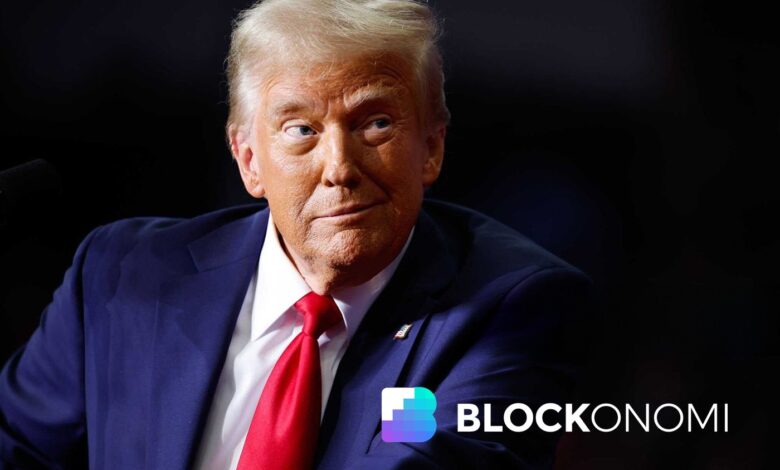Billions Wiped Out As Trump Tariffs Spark Renewed Inflation Fears

Stock markets are ready for extreme volatility following the weekend crypto sell-off.
Roughly $2.2 billion was liquidated from the cryptocurrency market in the last 24 hours following President Donald Trump’s announcement of tariffs on imports from Canada, Mexico, and China, according to data from Coinglass.
OMG!
Bitcoin, the largest cryptocurrency by market cap, plummeted to a low of $92,500 on Sunday night, according to CoinMarketCap data, after failing to hold above $100,000 as soon as tariff news surfaced. It is currently hovering around $93,000, down 6.5% in the last 24 hours.
Bitcoin’s decline, however, was dwarfed by the losses seen in other digital assets. During the same timeframe, Ethereum, Solana, and numerous other altcoins saw their values slashed by double-digits.
Ethereum (ETH) plummeted 20% to $2,400, while XRP and Dogecoin (DOGE) each crashed 24%. Cardano (ADA) tumbled 25%, Binance Coin (BNB) shed 15%, and Solana (SOL) fell 15%. The cryptocurrency market cap fell 10% to $3 trillion.
The sharp market sell-off marked the largest single-day liquidation event in crypto history. This event surpassed previous major market sell-offs associated with the COVID-19 crisis and the FTX collapse.
According to Coinglass, the downturn triggered massive liquidations in the cryptocurrency derivatives market, with over $1.8 billion in long positions wiped out across leading trading platforms and $345 million in short positions.
As of the latest data, Ether took the brunt of losses, with a whopping $603 million in liquidations in the past day. Bitcoin wasn’t far behind at $407 million while a combined $435 million in liquidations hit a bunch of other altcoins. XRP saw a hefty $115 million wiped out, while SOL and DOGE clocked in at $85 million and $83 million, respectively.
On February 1, Trump announced new tariffs on imports from Canada, Mexico, and China, set to take effect on February 4. The tariffs include a 25% levy on goods from Canada and Mexico and a 10% tariff on Chinese imports.
Trump has stated that these measures are necessary to combat illegal immigration and drug trafficking, which he has labeled a national emergency.
The tariffs will apply to all imports except Canadian energy resources, which will face a reduced tariff of 10%. Goods already in transit before the announcement are exempt from these tariffs.
However, economists warn that Trump’s planned tariffs could inflate prices across various sectors, including automobiles and food products. Affected businesses, in order to maintain profitability, often pass these increased costs along to U.S. consumers in the form of higher prices for the final products, which ultimately contributes to inflation.
After a trio of rate cuts last year, the Federal Reserve (Fed) kept interest rates on hold in the range of 4.25% to 4.5% during its January 2025 meeting. Fed Chair Jerome Powell stated that the central bank is not in a hurry to lower rates as recent economic indicators show solid expansion and a stable labor market.
The latest inflation data indicate that the annual inflation rate in the U.S. rose to 2.9% for the 12 months ending December 2024, up from 2.7% in November. This means inflation has been on the rise in three consecutive months.
The unemployment rate has remained low, and while inflation has shown signs of being persistent, the Fed is cautious about making additional cuts that could exacerbate inflationary pressures.
Canada and Mexico have signaled intentions to retaliate against Trump’s new tariffs. Canadian Prime Minister Justin Trudeau announced that Canada would implement 25% tariffs on approximately $155 billion worth of U.S. goods.
Mexican President Claudia Sheinbaum has also ordered retaliatory tariffs; however, specific rates and targeted products have not yet been detailed.
Global markets around the world are bracing for volatile trading on Monday as investors assess the potential fallout from President Trump’s tariff announcement. As trading commenced, the U.S. dollar strengthened while the Canadian dollar and peso weakened.
Nicholas Say was born in Ann Arbor, Michigan. He has traveled extensively, lived in Uruguay for many years, and currently resides in the Far East. His writing can be found all over the web, with special emphasis placed on realistic development, and the next generation of human technology.




